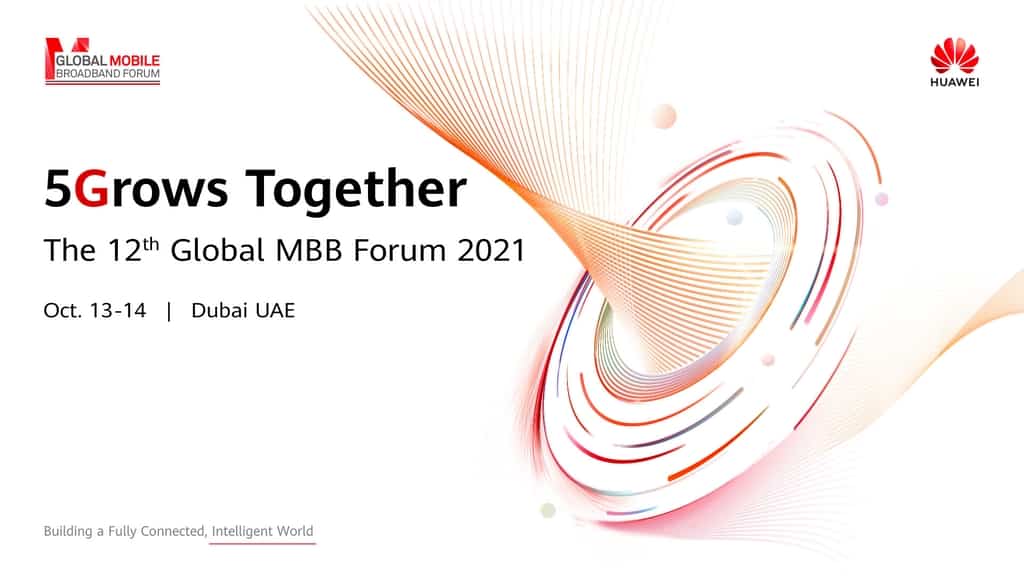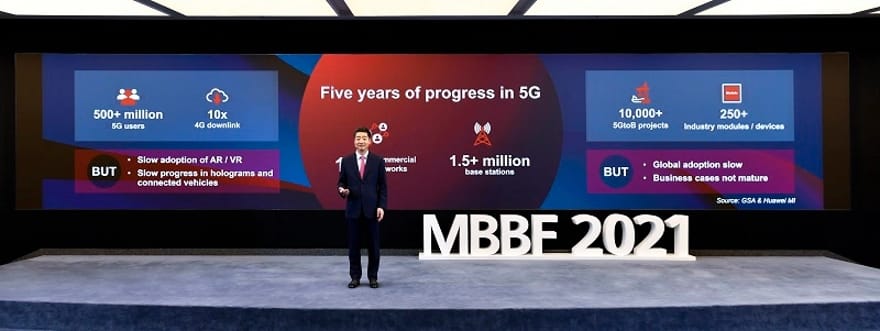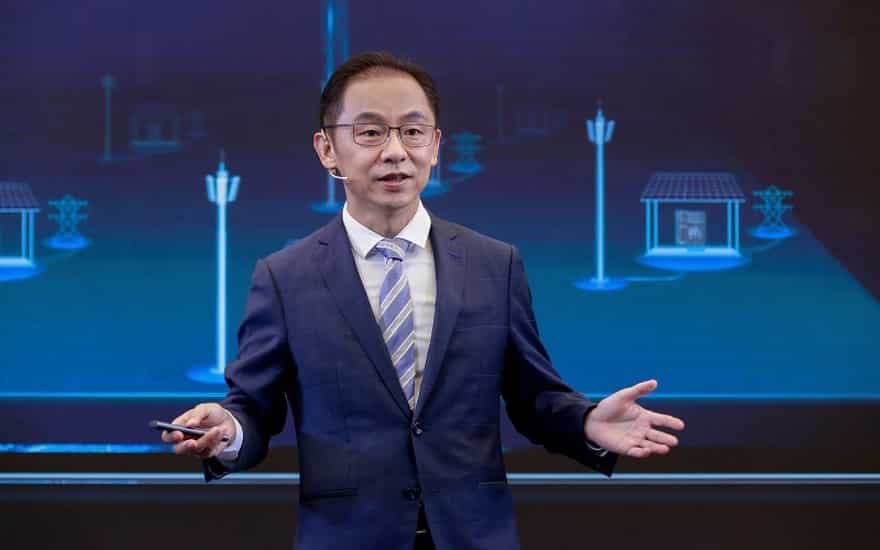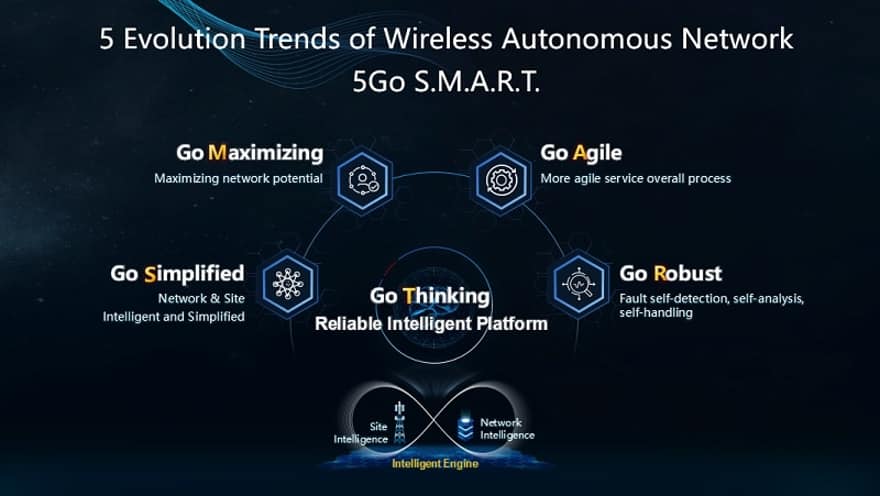5G has enormous growth potential in the coming years. One of the main reasons for this is that fundamentally new applications and business models are only possible with 5G — especially when it comes to requirements that need real-time communication with a high data rate and low latency.
Enterprises will become more agile, efficient, and data-driven with 5G. However, the technology also offers the opportunity to significantly improve quality in other areas of life. I am thinking, above all, of new applications in the fields such as autonomous vehicles, smart cities, smart homes, the Internet of Things (IoT), or eHealth.
Let me also underline the growth potential with a few specific figures for two segments:
- Firstly, 5G network infrastructure – according to Gartner, global revenue in this segment will increase 39% to a total of 19.1 billion US dollars in 2021, compared to 13.7 billion US dollars in 2020.
- Secondly, 5G services – according to Grand View Research, the global market size of this segment is estimated to reach 664.75 billion US dollars by 2028, which translates to a CAGR of 46.2% from 2021 to 2028.
All in all, a very promising starting situation for this decade.
With this in mind, I was curious about Huawei’s 12th Global Mobile Broadband Forum (MBBF) 2021, hosted together with its industry partners GSMA and the SAMENA Telecommunications Council. This took place last month in Dubai, United Arab Emirates. In the following, I provide insights into key topics that caught my attention at the event.

Work together on the next stage of 5G development
Huawei Rotating Chairman Ken Hu kicked off the event with his keynote speech. He focused his presentation on the current state of 5G development and new opportunities moving forward.
“In just five years of commercial deployment, 5G has provided a considerable upgrade in mobile experience for consumers, and it’s already starting to empower different industries around the globe. Progress was much faster than we expected, especially in terms of the subscriber base, network coverage, and the sheer number of 5G terminals on the market.”

Hu outlined three areas of opportunity that will drive the next stage of 5G’s growth, including XR services, the B2B market, and low-carbon development.
At this point, I would like to mention one aspect: there are already 10,000 projects exploring B2B applications of 5G (5GtoB) around the world. And many of these projects have already left the pilot phase behind — ready to scale in their industries such as manufacturing, mining, and ports.
While progress has been steady, Hu noted that there are still some areas for improvement. “Right now more than half of these 10,000 5GtoB projects are in China. We have a huge number of use cases already, but we need to build more sustainable business cases.”
The markets, as well as technical and global developments in the various industries, offer numerous opportunities, including the important topic of climate change.
Green 5G networks for a low-carbon future
Ryan Ding, Huawei’s Executive Director and President of the Carrier Business Group, gave a keynote speech titled “Green 5G Networks for a Low-Carbon Future”.
In his speech, Ding said that 5G has become a new engine for the growth of the mobile industry, and that to adapt to the rapid growth of data traffic, the whole industry will need to keep pursuing innovations in power supply, distribution, use, and management, and build greener 5G networks with higher performance and lower energy consumption.

High-quality 5G networks not only open up completely new opportunities but will also drive the rapid growth of mobile data traffic. It is estimated that the average data traffic per user per month will reach 600 GB by 2030. To bring this development in line with the requirements of climate change, solutions are necessary that significantly reduce the energy consumption of wireless networks.
Ding said that to cut the ICT industry’s greenhouse gas emissions by 45%, operators will need to pursue ongoing innovations in power supply, distribution, use, and management to build greener 5G networks with higher performance and lower energy consumption.
Huawei has already deployed low-carbon site solutions in more than 100 countries, including Saudi Arabia, Greece, Pakistan, and Switzerland, helping operators reduce carbon dioxide emissions by 40 million tons.
5Go S.M.A.R.T. – 5 evolution trends of wireless autonomous network
At the beginning of my article, I already pointed out the enormous growth potential of 5G in various fields. Autonomous vehicles are one such field that places very special demands on autonomous driving networks and their operators.
Against this background, Ma Hongbo, President of Huawei Wireless SingleOSS Product Line, delivered a keynote titled “5Go S.M.A.R.T., Ushering Wireless Networks into the Intelligent and Autonomous Era”. His speech was part of the 4th Wireless Autonomous Driving Network Industry Forum. The forum was held within the framework of the 12th Global Mobile Broadband Forum.
With 5G, the mobile communications industry is promoting the concept of autonomous driving networks by integrating wireless networks with intelligence. Operators are gradually and hierarchically implementing autonomous driving networks as their core strategy.
In the next decade, over 80% of the 42 independently interviewed operators believe that they will deploy a large-scale fully autonomous driving network according to research by TMF Autonomous Networks in 2021.

Hongbo highlighted the importance of network autonomy for 5G operators and predicted five key areas of evolution for wireless networks: Simplified, Maximizing, Agile, Robust, and Thinking — named 5Go S.M.A.R.T.
For the sake of completeness, let me list these five key areas of evolution below:
- Go Simplified: Network construction will become more intelligent and simplified throughout its lifecycle
- Go Maximizing: Vertical collaboration will maximize network potential
- Go Agile: The entire process of 5G services will become more agile
- Go Robust: 5G networks will become more reliable
- Go Thinking: 5G networks will be able to “think”
One thing becomes clear: wireless network evolution has brought new opportunities, but also increased network OPEX and O&M complexity.
Ma Hongbo noted, “To achieve fully autonomous driving networks requires the joint efforts of all industry stakeholders in terms of level criteria, evaluation systems, and application collaboration.”
Conclusion
On the one hand, 5G is promising when it comes to growth potential in the coming years. On the other hand, the technology opens up undreamt-of opportunities in terms of added value for people, businesses, and the environment.
I am confident that 5G will make a significant contribution to overcoming our economic and ecological challenges. And in my opinion, the impressions I took with me from the 12th Global Mobile Broadband Forum in Dubai confirm this trend.
As a significant player in the communications industry, Huawei presented innovative solutions to add business value and drive growth. The Chinese company also made it clear to put green development at the center of everything it does — building greener 5G networks with operators worldwide.
For more information on Huawei’s 12th Global Mobile Broadband Forum 2021, including graphics, videos, and keynote playbacks, please click here.

